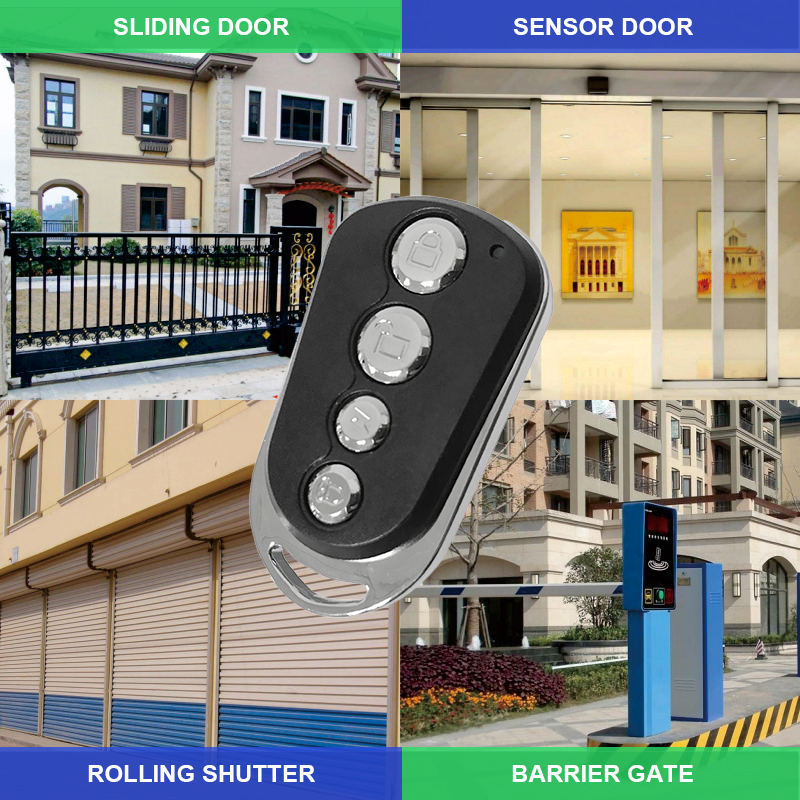Replacing a garage door remote can seem like a straightforward task, but several critical factors must be considered to ensure compatibility, functionality, and security. This article explores these factors in detail, providing you with a comprehensive guide to choosing the right garage door remote replacement.

1. Compatibility with Existing Opener
a. Brand and Model: The first step in choosing a replacement remote is to ensure compatibility with your existing garage door opener. Check the brand and model of your opener and find a remote that is specifically designed to work with it. Many manufacturers produce remotes that are only compatible with their own openers.
b. Frequency: Garage door openers operate on specific radio frequencies. Common frequencies include 300 MHz, 310 MHz, 315 MHz, and 390 MHz. Ensure the replacement remote operates on the same frequency as your opener.
2. Type of Remote
a. Universal vs. Brand-Specific: Universal remotes can be programmed to work with a variety of garage door openers from different manufacturers. Brand-specific remotes are designed to work with particular models. If you have multiple garage doors or brands, a universal remote might be more convenient.
b. Single-Button vs. Multi-Button: Single-button remotes control one garage door, while multi-button remotes can control multiple doors or even other devices like gates or lighting systems. Choose based on your specific needs.
3. Programming and Installation
a. Ease of Programming: Some remotes are easier to program than others. Look for remotes with simple, straightforward programming instructions. Many modern remotes come with “learn” buttons that make programming quick and easy.
b. Professional Installation: While most remotes are designed for easy DIY installation, some may require professional assistance, especially if you encounter compatibility issues or technical difficulties.
4. Security Features
a. Rolling Code Technology: Security is a paramount concern. Choose a remote with rolling code technology, which changes the code each time the remote is used. This prevents code grabbing and unauthorized access.
b. Tamper Resistance: Opt for remotes with tamper-resistant features to prevent unauthorized programming or use.
5. Battery Life and Type
a. Battery Type: Different remotes use different types of batteries, such as lithium or alkaline. Ensure you can easily find and replace the batteries.
b. Battery Life: Consider the battery life of the remote. Longer battery life reduces the frequency of replacements and ensures reliable performance.
6. Range and Signal Strength
a. Operating Range: The range of the remote is crucial, especially if you have a long driveway or thick walls. Check the maximum range and ensure it meets your needs.
b. Signal Interference: Be aware of potential signal interference from other devices like Wi-Fi routers or other electronics. Choose a remote that can maintain a strong, reliable signal despite such interference.
7. Durability and Build Quality
a. Material: Remotes can be made from various materials, impacting their durability. Look for remotes with robust, weather-resistant materials, especially if you live in areas with extreme weather conditions.
b. Buttons and Housing: Ensure the buttons are responsive and durable. The housing should protect the internal components from dust, moisture, and impact.
8. Cost and Value
a. Price Range: Garage door remotes come in various price ranges. While it might be tempting to go for the cheapest option, consider the features and build quality. Sometimes, spending a bit more upfront can save you money in the long run.
b. Value for Money: Assess the overall value, not just the price. A slightly more expensive remote with better features, longer battery life, and enhanced security might provide better long-term value.
9. Additional Features
a. Smart Home Integration: For those who use smart home systems, consider remotes that can integrate with these systems. Some remotes can connect to your home’s Wi-Fi and be controlled via smartphone apps.
b. Multi-Functional Use: Some remotes offer additional functions, such as controlling home lighting systems, gates, or other automated systems. These can be particularly useful if you want a unified control system.
Conclusion
Selecting the right garage door remote replacement involves a careful consideration of several factors, including compatibility, type, security features, battery life, range, durability, cost, and additional features. By taking the time to evaluate these factors, you can choose a remote that not only meets your immediate needs but also provides reliable and secure performance over the long term. Investing in a high-quality garage door remote can enhance convenience, security, and overall user experience, making it a worthwhile decision for any homeowner.

-
Office ViewQinuo Electronics Co., Ltd.was founded in 2009,it is a high-tech company that integrated R & D, manufacturing, sales and service for 15 years,which is mainly specialized in providing sensors of automatic door, control system of door and gate, car key remote, auto parts etc. The company currently has four independent brands: U-CONTROL, U-SENSORS, U-AUTOGATES and U-AUTOKEYS.
-
got questions? call us
+86 13960286508
-
fax :
+86 595 22901208 -
Email :
[email protected]
-
address
- No.991 Xingxiu Road,Taiwanese Investment Zone, Quanzhou, Fujian Province,P.R.China











